Japan is first and foremost an island country – with 3,000 of them in all – and yet in stark contrast to other archipelagic nations such as Indonesia and the Philippines the name Japan rarely, if ever, conjures up images of islands in people’s minds. This curious paradox can largely be attributed to the country’s abundance of other postcard images – misty green mountains, ancient religious monuments, high-tech urban images of the future and so on – but there is definitely more to it than this. Japan’s smaller islands have traditionally been ignored and even shunned, dismissed as untamed, perilous frontier lands, in some cases forbidden outright, and in others used as dumping grounds for prisoners and other undesirables. Several islands have at one point or another served this purpose, but none so notoriously as Sado-ga-shima, Japan’s eternally repudiated sixth-largest island, long the empire’s last place on earth. Even today the island feels like a remote and neglected place, too far from the mainland to be seen with the naked eye, enveloped in fog much of the year and in winter regularly besieged by heavy snows and icy winds that killed many an exile in days of old. Nevertheless, this very mixture of isolation, hardship and heroic defiance gave birth to a cultural vitality best exemplified by the island’s best-known ambassadors – Kodō, the world-renowned exponents of taikō drumming, who through their international prestige and the yearly musical extravaganza Earth Celebration which they manage have finally earned some respite for this devil’s island.
History has dealt Japan’s peripheral islands more than their fair share of bad hands, and Sado is certainly no exception. Almost immediately after the establishment of mainland control in the 8th century, this windswept outpost was converted into a penal colony, its isolation and harsh conditions making banishment there the most severe punishment available to authorities short of the death penalty. The next millennium saw a whole host of iconoclasts and provocateurs sent to the island, including the Kamakura emperor Juntoku for his role in an abortive 1221 coup against the Kamakura Shogunate, the radical Buddhist preacher Nichiren Daishonin in 1271 – exiled for three years before being pardoned, and the legendary Nōdramaturge Zeami Motokiyo – exiled in 1434 for reasons which remain unclear. Banishments to Sado were halted in around 1700 when enormous gold deposits were discovered in the hills of the island. This, however, led to a new wave of exiles to the island in the form of conscripted itinerants from the cities of the mainland who were pressed into slave-like labor in the island’s mines. The discovery did, however, result in something of an economic boom for the island, drawing migrants from throughout Japan, helping bestow upon the island a culture and dialect distinctly different from neighboring Echigo Province (modern Niigata Prefecture). The early twentieth century saw a number of Sado islanders figure prominently in mainland artistic and intellectual circles, from Meiji era modern art pioneer Tsuchida Bakusen to interwar political philosopher and ultranationalist icon Kita Ikki. The island, however, continued to suffer political and economic neglect, reverting to a poor backwater place with the waning of the gold rush, and with a population that has been steadily declining since 1950. Nevertheless, tourism and a cultural renaissance spearheaded by the Kodō troupe have helped breathe new life into the island, turning the place into something of a small artistic powerhouse. Furthermore, it has drawn yet another wave of exiles, namely the students who arrive every year join Kodō’s legendarily arduous training camp, exiles who, unlike their ill-fated forerunners, are all volunteers.
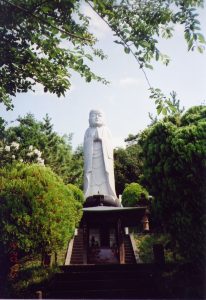 From a distance, Sado’s craggy shores and brilliantly green fields could easily be mistaken for Newfoundland or the west coast of Ireland, and a drive around the island, 885 square kilometers in size and vaguely S-shaped, reveals a land as bucolic and unspoiled as one is likely to find anywhere in Japan, with century-old farmhouses, green meadows, lush forests and ancient temples dotting the landscape. (The island’s neglect may have been something of a blessing in that it has thus far spared it much of the reckless development that has blighted much of Japan’s landscape, and Niigata Prefecture in particular, home of former prime minister and pork-barrel public works spender extraordinaire Tanaka Kakuei.) Indeed, Sado’s reputation for ecological consciousness has been bolstered in recent years by its much-heralded campaign to bring the island’s iconic bird, the Japanese crested ibis (toki), back from the brink of extinction through a breeding program. The larger northern half of the island is covered by the Ō-Sado mountain range, with peaks over 1000 meters, with the Ko-Sado range spanning the smaller southern half. These two ranges are intersected by the Kuninaka Plain, which is primarily agricultural and contains most of the island’s population. With the gold rush long consigned to the history books, fishing and agriculture remain the backbone of the island’s economy (with a notably robust sake industry stemming from the island’s rice cultivation), but it has been the tourism industry that has helped fuel Sado’s cultural renaissance. The island offers a wide range of tourist attractions, many centered around the gold rush era, located in and around the former gold boomtown of Aikawa, in which visitors are invited to pan for gold or peruse preserved mine shafts inhabited by robotic miners designed to replicate the horrific conditions in which Sado’s miners once worked. Buddhism is a palpable presence on Sado, with numerous temples dotting the island, most of them connected to the sect founded by the island’s most famous religious icon, Nichiren. While the island’s physical beauty and compelling history invariably have had much to do with this, but no force has done more to bolster the island’s international reputation than the Earth Celebration, now entering its nineteenth year, and the forty-eight member taikō group which manages the event and maintains a year-round home base at Sado’s so-called “Kodō Village.”
From a distance, Sado’s craggy shores and brilliantly green fields could easily be mistaken for Newfoundland or the west coast of Ireland, and a drive around the island, 885 square kilometers in size and vaguely S-shaped, reveals a land as bucolic and unspoiled as one is likely to find anywhere in Japan, with century-old farmhouses, green meadows, lush forests and ancient temples dotting the landscape. (The island’s neglect may have been something of a blessing in that it has thus far spared it much of the reckless development that has blighted much of Japan’s landscape, and Niigata Prefecture in particular, home of former prime minister and pork-barrel public works spender extraordinaire Tanaka Kakuei.) Indeed, Sado’s reputation for ecological consciousness has been bolstered in recent years by its much-heralded campaign to bring the island’s iconic bird, the Japanese crested ibis (toki), back from the brink of extinction through a breeding program. The larger northern half of the island is covered by the Ō-Sado mountain range, with peaks over 1000 meters, with the Ko-Sado range spanning the smaller southern half. These two ranges are intersected by the Kuninaka Plain, which is primarily agricultural and contains most of the island’s population. With the gold rush long consigned to the history books, fishing and agriculture remain the backbone of the island’s economy (with a notably robust sake industry stemming from the island’s rice cultivation), but it has been the tourism industry that has helped fuel Sado’s cultural renaissance. The island offers a wide range of tourist attractions, many centered around the gold rush era, located in and around the former gold boomtown of Aikawa, in which visitors are invited to pan for gold or peruse preserved mine shafts inhabited by robotic miners designed to replicate the horrific conditions in which Sado’s miners once worked. Buddhism is a palpable presence on Sado, with numerous temples dotting the island, most of them connected to the sect founded by the island’s most famous religious icon, Nichiren. While the island’s physical beauty and compelling history invariably have had much to do with this, but no force has done more to bolster the island’s international reputation than the Earth Celebration, now entering its nineteenth year, and the forty-eight member taikō group which manages the event and maintains a year-round home base at Sado’s so-called “Kodō Village.”
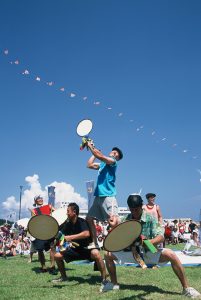 In a fashion befitting Sado international ambassadors par-excellence, the members of Kodō (a name which is alternately translated as ‘hearbeat’ and ‘child of the drum’) and its numerous understudies characterize better than anyone the endurance and resolve in the face of hardship that have long been the hallmarks of the Sado experience. Each year a new wave of aspiring Kodō-ites arrive on the island to embark on a two-year-long training program that resembles a combination of Zen monasticism and Marine Corps boot camp. Students live in a commune in which they are required to grow their own food, run ten kilometers over a mountain every day (including in the dead of winter) and otherwise eat, sleep and breathe drumming, enduring bloody knuckles and total physical exhaustion on a daily basis, all for the far-from-guaranteed chance of being asked to join the Kodō organization. The result of this arduous physical training is apparent to all who witness the group in action; a dazzling combination of artistry, rhythm, athleticism and martial arts-type intensity, a more spectacular live performance of any kind is hard to imagine. Since the group’s foundation in 1981, Kodō has established itself as one of the world’s most commercially successful world music acts and has participated in countless music festivals and cultural events throughout the world, and enlisted a bewildering array of collaborators. Equally committed to promoting taikō drumming and other traditional Japanese musical forms worldwide and highlighting similarly talented exponents of music from around the world, Earth Celebration, which the troupe launched in 1988, has become their annual pride and joy, which usually features Kodō alongside a headliner from overseas (past guests have included world-renowned Indian percussionist Zakir Hussain, the Doudou N’diaye Percussion Orchestra from Senegal and American jazz drumming legend Elvin Jones) along with a host of other taikō groups and other performers. The quality of the music, coupled with the conviviality of the event, makes Earth Celebration an event not to be missed. In its nearly twenty-year history, Earth Celebration has arguably become Japan’s finest music festival of any kind, and its international esteem continues to grow.
In a fashion befitting Sado international ambassadors par-excellence, the members of Kodō (a name which is alternately translated as ‘hearbeat’ and ‘child of the drum’) and its numerous understudies characterize better than anyone the endurance and resolve in the face of hardship that have long been the hallmarks of the Sado experience. Each year a new wave of aspiring Kodō-ites arrive on the island to embark on a two-year-long training program that resembles a combination of Zen monasticism and Marine Corps boot camp. Students live in a commune in which they are required to grow their own food, run ten kilometers over a mountain every day (including in the dead of winter) and otherwise eat, sleep and breathe drumming, enduring bloody knuckles and total physical exhaustion on a daily basis, all for the far-from-guaranteed chance of being asked to join the Kodō organization. The result of this arduous physical training is apparent to all who witness the group in action; a dazzling combination of artistry, rhythm, athleticism and martial arts-type intensity, a more spectacular live performance of any kind is hard to imagine. Since the group’s foundation in 1981, Kodō has established itself as one of the world’s most commercially successful world music acts and has participated in countless music festivals and cultural events throughout the world, and enlisted a bewildering array of collaborators. Equally committed to promoting taikō drumming and other traditional Japanese musical forms worldwide and highlighting similarly talented exponents of music from around the world, Earth Celebration, which the troupe launched in 1988, has become their annual pride and joy, which usually features Kodō alongside a headliner from overseas (past guests have included world-renowned Indian percussionist Zakir Hussain, the Doudou N’diaye Percussion Orchestra from Senegal and American jazz drumming legend Elvin Jones) along with a host of other taikō groups and other performers. The quality of the music, coupled with the conviviality of the event, makes Earth Celebration an event not to be missed. In its nearly twenty-year history, Earth Celebration has arguably become Japan’s finest music festival of any kind, and its international esteem continues to grow.
Heir to a long and troubled history and home to a unique and indomitable culture, Sado Island has a tremendous amount to offer the visitor, and thanks to the matchless publicity that Kodō and EC have done for the place, Japan’s isle noire of yesteryear appears to have finally earned itself a permanent place in the sun.
Story by Benjamin Freeland
From J SELECT Magazine, August 2006
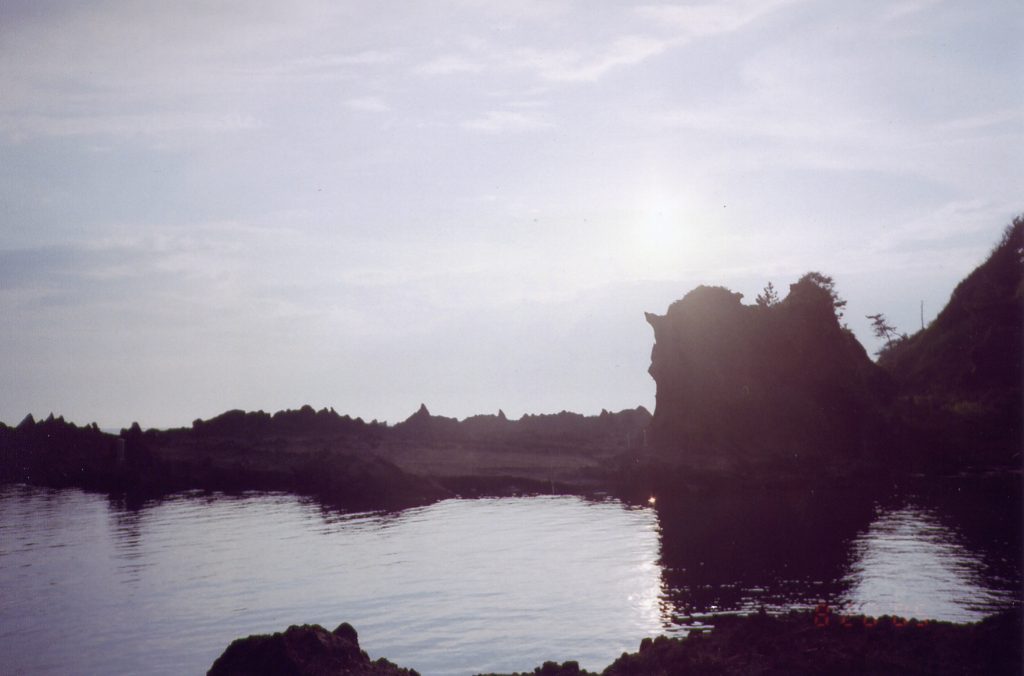



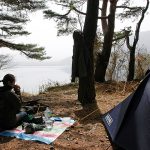
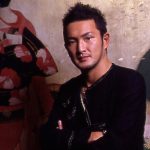
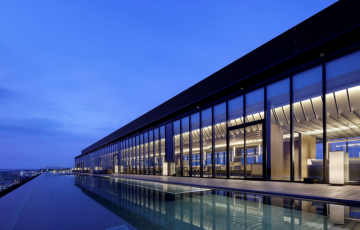
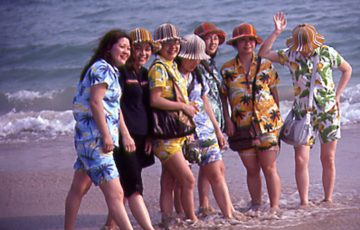

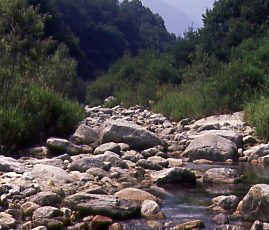
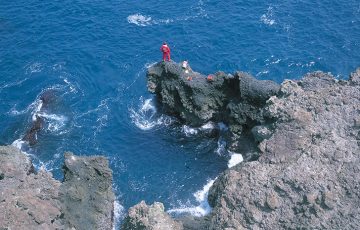


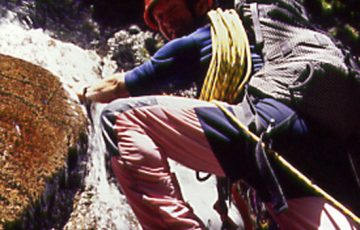


Recent Comments